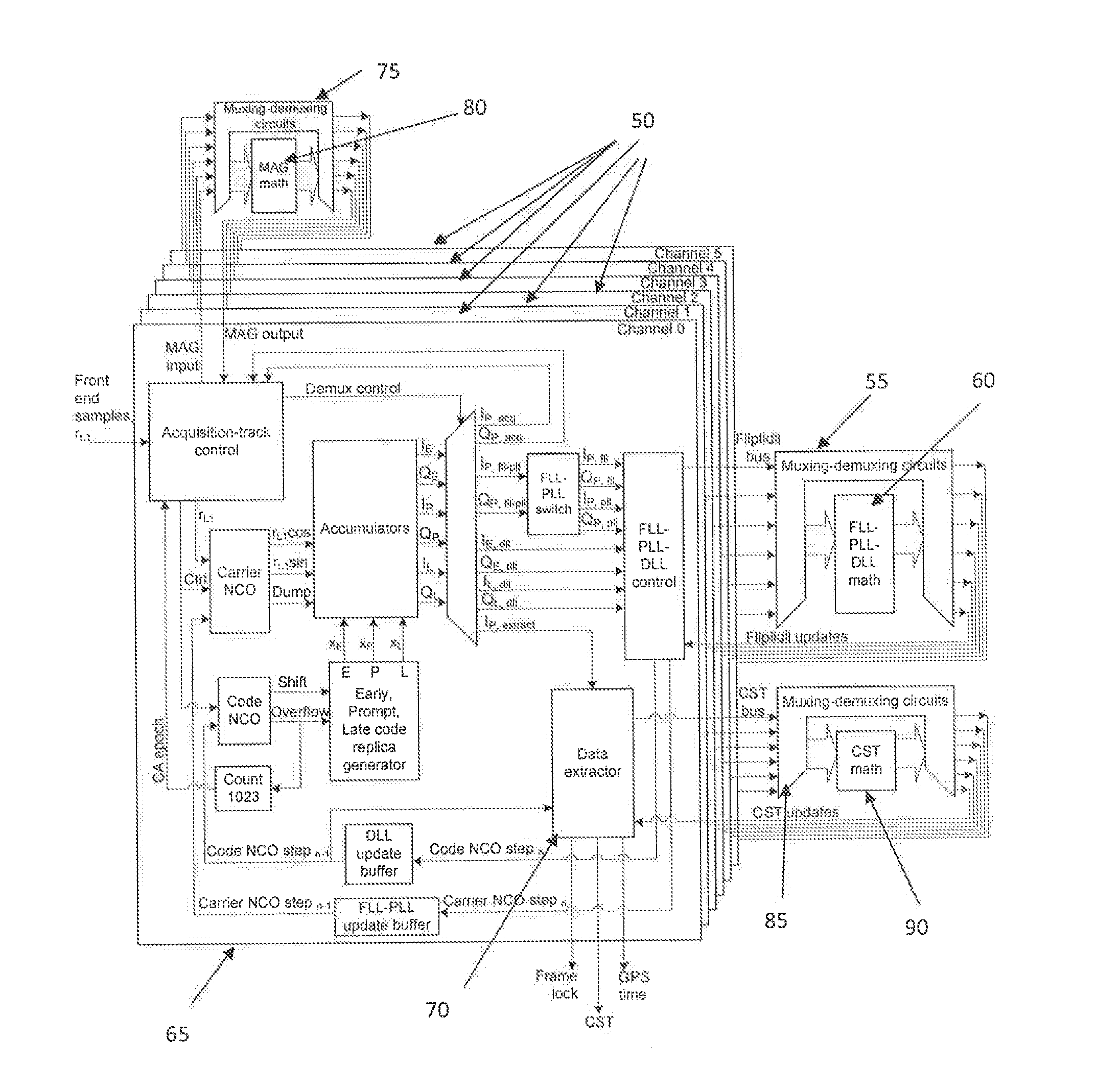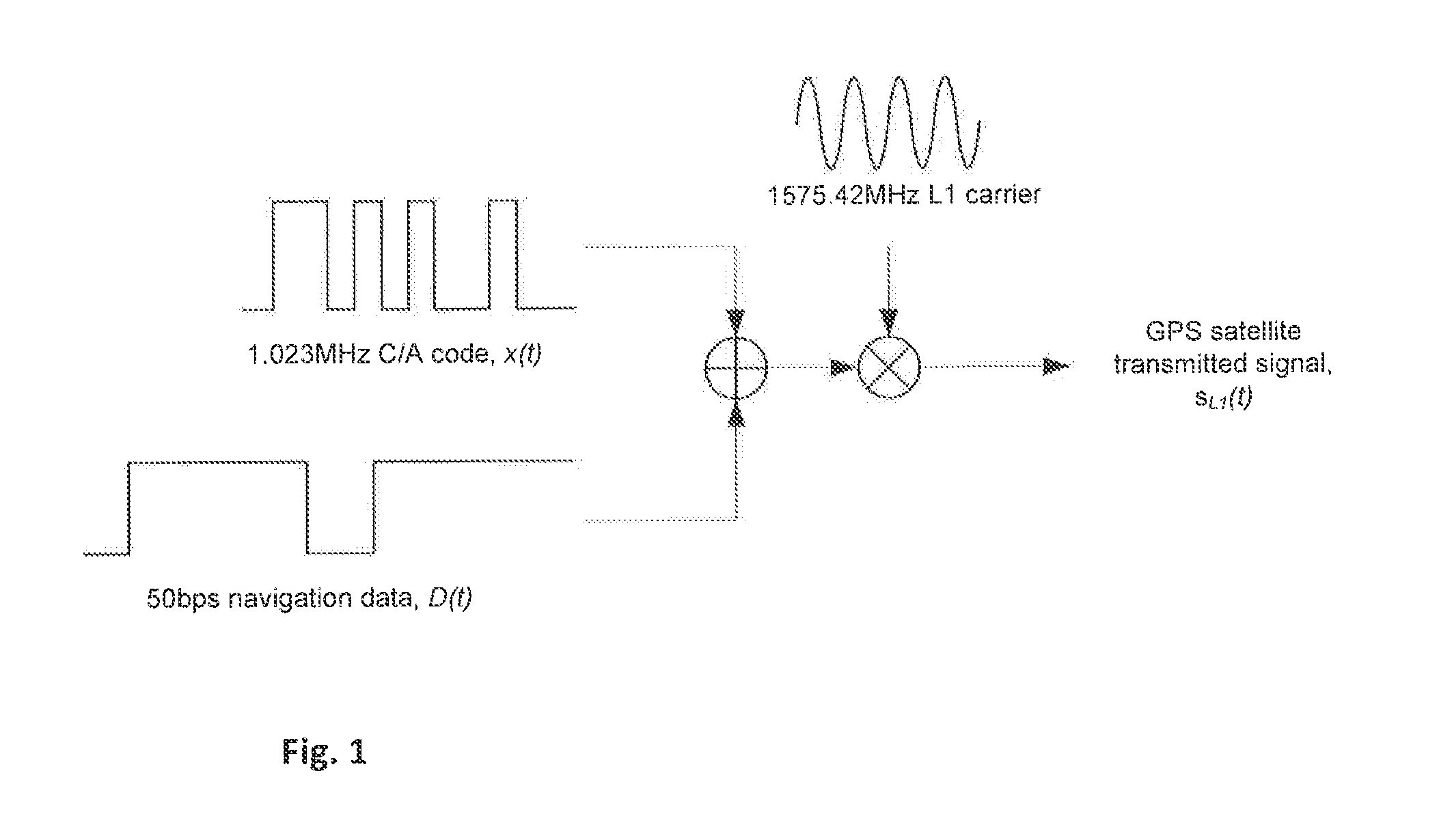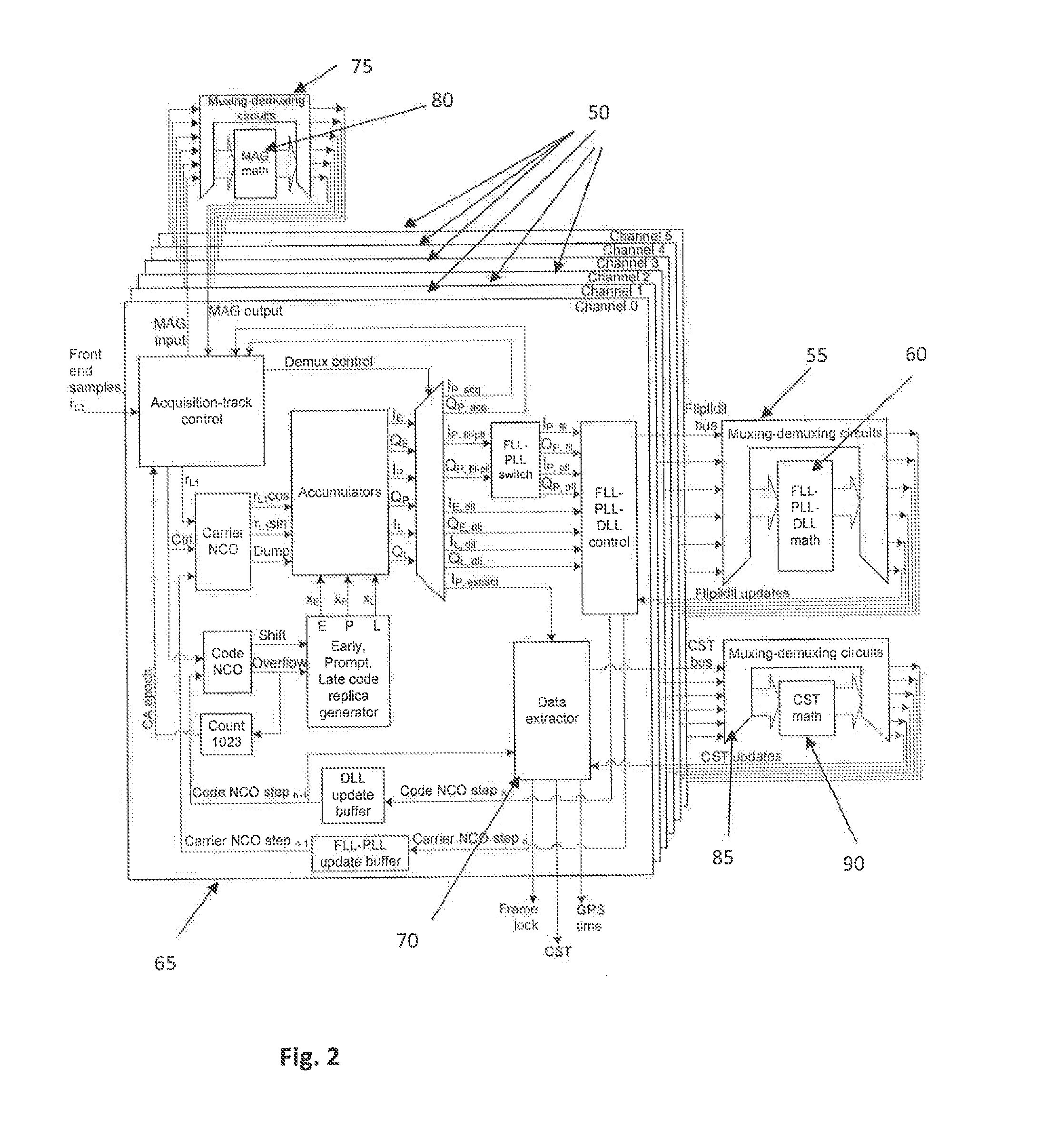Low power asynchronous GPS baseband processor
a gps baseband processor, low power technology, applied in satellite radio beaconing, measurement devices, instruments, etc., can solve the problems of limiting continuous gps operation in mobile devices, more work needs to be done to lower the power consumption of gps baseband processors, and development and debugging but not suitable for low power applications. to achieve the effect of minimizing power consumption
- Summary
- Abstract
- Description
- Claims
- Application Information
AI Technical Summary
Benefits of technology
Problems solved by technology
Method used
Image
Examples
Embodiment Construction
[0030]The present disclosure will be more completely understood through the following description, which should be read in conjunction with the drawings. In this description, like numbers refer to similar elements within various embodiments of the present disclosure. Within this description, the claims will be explained with respect to embodiments. The skilled artisan will readily appreciate that the methods, apparatus and systems described herein are merely exemplary and that variations can be made without departing from the spirit and scope of the disclosure.
[0031]As used herein, the singular forms “a,”“an,” and “the” include the plural reference unless the context clearly dictates otherwise.
[0032]Except where otherwise indicated, all numbers expressing quantities, conditions, and so forth used in the specification and claims are to be understood as being modified in all instances by the term “about.”
[0033]Before describing the present teachings in detail, certain terms are define...
PUM
 Login to View More
Login to View More Abstract
Description
Claims
Application Information
 Login to View More
Login to View More - R&D
- Intellectual Property
- Life Sciences
- Materials
- Tech Scout
- Unparalleled Data Quality
- Higher Quality Content
- 60% Fewer Hallucinations
Browse by: Latest US Patents, China's latest patents, Technical Efficacy Thesaurus, Application Domain, Technology Topic, Popular Technical Reports.
© 2025 PatSnap. All rights reserved.Legal|Privacy policy|Modern Slavery Act Transparency Statement|Sitemap|About US| Contact US: help@patsnap.com



